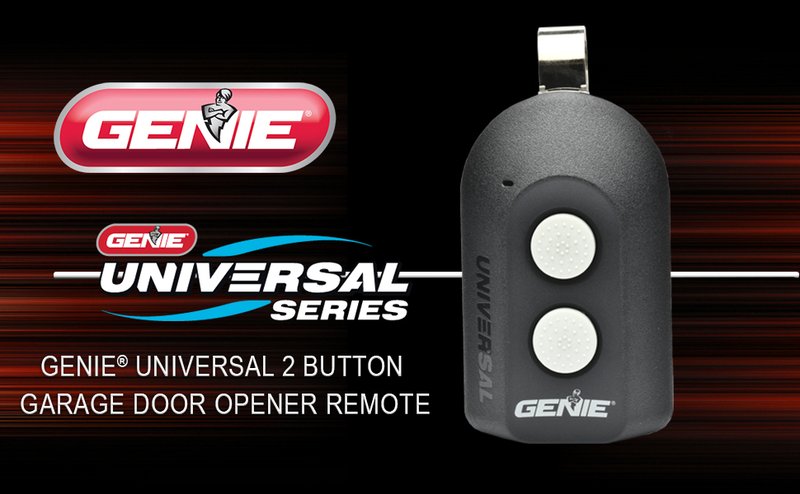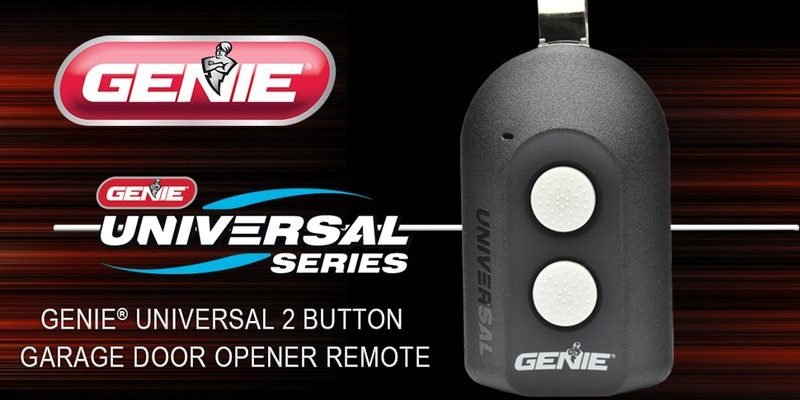
Here’s the thing: garage door technology, especially brands like Genie, has evolved a lot. Some remotes look high-tech, but their compatibility isn’t always straightforward. And when it comes to pairing them with your car? It’s not as plug-and-play as syncing your phone to Bluetooth. Let’s untangle the nitty-gritty and make sense of how (and if) Genie remotes work with cars.
Understanding Genie Garage Door Remotes
Before diving into compatibility, let’s get on the same page about what Genie garage door remotes actually are. These small devices act as wireless transmitters. When you press the button, the remote sends a specific radio code to your garage door opener, asking it to open or close. Simple enough, right? But beneath that single click lies a bit of tech magic.
Over the years, Genie remotes have morphed from simple “fixed code” devices to advanced “rolling code” transmitters. That’s a fancy way of saying newer remotes change their signal every time you use them, making it much harder for anyone to copy or hack the code. This rolling code security is great for peace of mind, but it also means not every car out there can speak Genie’s language without a little extra effort.
Honestly, the type of Genie remote you have matters. Some are basic, single-button models, while others let you control multiple doors or even lights. Knowing your model (usually found on the back) is the first step if you’re hoping to pair it directly with your car.
How Cars Connect to Garage Door Openers
Now, let me explain how cars try to “talk” to garage doors—because it’s not magic, even when it feels like it should be. Most newer vehicles come with a built-in system called HomeLink or, in some cases, Car2U. These systems act like universal remotes for your vehicle, letting you program garage doors, gates, and even home lighting—all from the comfort of your driver’s seat.
Here’s what usually happens:
- You hit “program” on your car’s console.
- The car asks you to press your original garage remote next to a receiver.
- The system tries to “learn” the remote’s code and replicate it.
But here’s where things get tricky with Genie—some older and rolling code models don’t always sync up seamlessly. That’s not because Genie is trying to make your life harder. It’s just that different generations of tech sometimes speak slightly different “dialects.” If your car was made after 2010, you’ll probably find it easier, but pre-2010? Sometimes you’ll need extra adapters or workarounds.
And remember: you’re not pairing your car to the remote itself. You’re actually pairing it to the garage door opener unit in your garage—using your remote as a translator during programming.
Are Genie Garage Remotes Directly Compatible With Cars?
You might be wondering, “Can I just use my Genie garage remote with my car, no extra steps?” The answer is: not exactly. Genie garage remotes aren’t designed to sync directly with vehicle electronics. Instead, your *car’s* built-in system (like HomeLink) is what can replicate the remote’s function—by learning how to send the right code to your Genie garage opener.
So, are Genie garage remotes compatible with cars? The remote itself can’t be programmed to your car, but your car may be able to “learn” the Genie system by copying the remote’s signal. This works well with most rolling code Genies made after 1997 and most vehicles with HomeLink made after 2010. If both are newer, you’re likely in luck.
Still, there are exceptions:
- Some Genie openers require a special “HomeLink Compatibility Bridge” to act as a middleman.
- Older Genie models using fixed codes may not play nicely with modern car systems.
- Likewise, some cars have older tech that just can’t keep up.
If it feels like everyone’s speaking a different language, well, sometimes they are.
So before you pull your car into the driveway and expect magic, double-check your Genie and your car’s model years.
Step-by-Step: Pairing Your Car With a Genie Garage Door Opener
If your car and Genie opener are compatible, here’s a step-by-step guide to sync them up. Don’t worry if this feels intimidating. Take it slow and picture your car and garage opener trying to shake hands for the first time.
What you’ll need:
- Your Genie remote
- Your car’s owner’s manual (for HomeLink instructions)
- A ladder, if your opener’s “learn” button is out of reach
Here’s how pairing usually works:
- Put your car in parking mode with the ignition on, but engine off for safety.
- Hold your Genie remote close to the car’s HomeLink buttons (often above the rearview mirror or on the visor).
- Press and hold the desired HomeLink button and your Genie remote button at the same time. Hold until the HomeLink indicator flashes rapidly—usually 20–30 seconds.
- Go to your Genie garage opener in your garage. Press the “Learn” or “Program” button on the opener (this gives your car permission to join the club).
- Return to your car and press the programmed HomeLink button twice. The garage door should move—if it does, you’re all set!
If you hit a snag, don’t panic. Sometimes the process takes a couple tries, especially if you’re dealing with rolling codes. If your car and Genie don’t handshake, consult your manuals—sometimes an extra HomeLink Compatibility Bridge or Genie adapter is all you need.
Common Problems When Syncing Genie Remotes With Cars
Honestly, this is the part where people start to lose patience. The most common headache: the car’s HomeLink system just won’t “learn” the Genie code. If this happens, double-check a few things before you give up hope.
Common hiccups:
- Battery issues: If your Genie remote’s battery is weak, the pairing signal might not be strong enough. Always swap in a fresh battery first.
- Wrong sequence: The order in which you press buttons matters. Follow the steps exactly—out of order means no dice.
- Compatibility: Some older cars simply can’t sync with the rolling code used by newer Genie remotes. It’s not your fault—it’s just old tech meeting new tech.
- Signal interference: Anything from LED bulbs in the opener, to thick garage walls, can mess up pairing. Move closer if you’re having trouble.
Troubleshooting is part of the process. Don’t be shy about double-checking the manual or searching your car make with “Genie HomeLink pairing.”
If all else fails, a HomeLink Compatibility Bridge is a reliable fix for most modern Genie openers and older vehicles. It acts as a translator, helping tech from two different eras get along.
Genie Remotes vs. Universal Garage Door Remotes
Not all remotes are created equal. Genie remotes are made to work seamlessly with Genie openers, but sometimes a universal garage door remote makes more sense—especially if you have more than one brand of opener at home.
Here’s the trade-off:
- Genie remotes: Best fit for Genie openers, with highest reliability and security.
- Universal remotes: Flexible. Work with many brands—great if you switch openers, move homes, or have a mix.
If your car’s HomeLink system won’t play nice with Genie, a universal remote clipped to your visor is a practical, no-fuss backup. Just make sure the universal remote lists Genie as a compatible brand—most major ones do, and pairing is usually straightforward.
Think of Genie remotes as a custom-fitted suit, and universals as your favorite jeans—each has their time and place.
How Genie Rolling Code Technology Impacts Compatibility
Rolling code technology is the security guard in this story. Every time your Genie remote is used, it generates a new code, making it nearly impossible for thieves to clone. That’s why you see those little “Intellicode” or “CodeDodger” logos on new Genie gear.
But this extra layer of security complicates pairing. Some older car HomeLink systems can only clone one fixed code, not keep up with rolling changes. Newer cars (2011 and later) tend to have upgraded HomeLink modules that claim to handle rolling codes without hiccups.
If you have an older vehicle, you might notice that the remote will sync, but the door won’t reliably open or close. That’s almost always a rolling code issue. Upgrading your car’s HomeLink software (if possible) or getting a compatibility bridge solves it.
Security upgrades are great—until your tech can’t keep up. Always check your opener and vehicle specs before getting frustrated.
Quick Genie Remote Troubleshooting Tips
So your car, garage, and remote just aren’t connecting. Don’t toss anything yet. A few quick fixes can save you hours of frustration.
Try these steps:
- Reset the Genie remote: Take out the battery, wait a moment, and reinsert it. Sometimes a quick reset clears weird glitches.
- Check codes: Some Genie remotes have a “learn” button. Make sure you’re holding it long enough—up to 30 seconds can feel like forever!
- Review manuals: Both your car and garage opener should have pairing instructions. Manufacturers sometimes change the sequence with new models.
- Test with another remote: If you have a second remote, try using it for programming. Faulty remotes can be the invisible culprit.
If none of these work, it’s time to check if a compatibility bridge or universal remote fits your needs better. No shame—it’s the tech, not you.
When to Consider a New Genie Remote or System
Sometimes, despite all the troubleshooting, things just don’t mesh. If your current Genie remote is over a decade old, or if your car’s technology is from the “pre-smartphone” era, an upgrade might be the simplest fix.
Here’s what to look for:
- Remote battery keeps dying: That’s usually a sign it’s time for a new remote, not just a new battery.
- Inconsistent syncing: If you’ve followed every step and things still only work half the time, consider newer tech.
- Desire for smart features: Want phone-based access, scheduling, or notifications? Genie’s newer systems or smartphone adapters might be your answer.
Still love your Genie opener but hate the remote hassle? Many new Genie openers support smartphone control, bypassing the car/remote dance entirely. It’s a bit of an investment, but for some, it’s worth the peace of mind and reliability.
Sometimes “out with the old, in with the new” is just common sense—especially when it means less frustration every day.
Final Thoughts: Getting Genie Remotes and Cars on the Same Page
Pairing Genie garage remotes with your car isn’t a one-size-fits-all process. The technology in both your car and opener set the rules of the game. While you can’t program a Genie remote *into* your car, most modern vehicles can learn to mimic your Genie remote—especially with HomeLink systems and a little patience. Occasionally, you might need a compatibility bridge or to settle for a universal remote if your tech is showing its age.
If you ever find yourself stuck, remember: you’re definitely not the first. Manuals, compatibility charts, and, yes, even a quick call to Genie customer support, can steer you back on course. With the right approach, you’ll have your garage and car working together—no more frantic remote hunts or rainy-day delays. Isn’t that what modern convenience is supposed to be?
